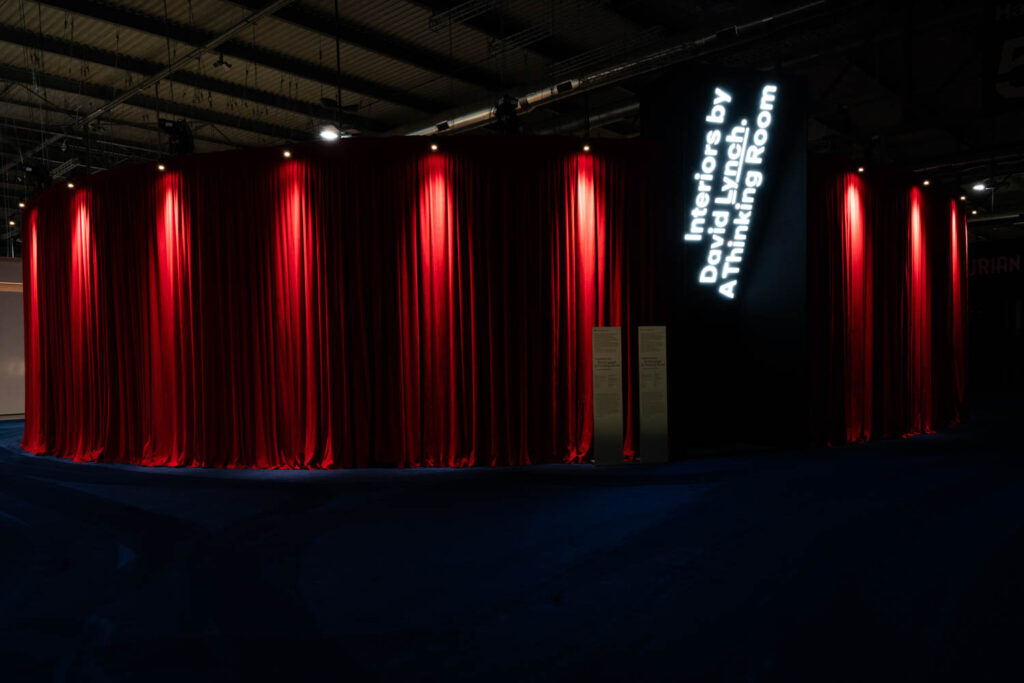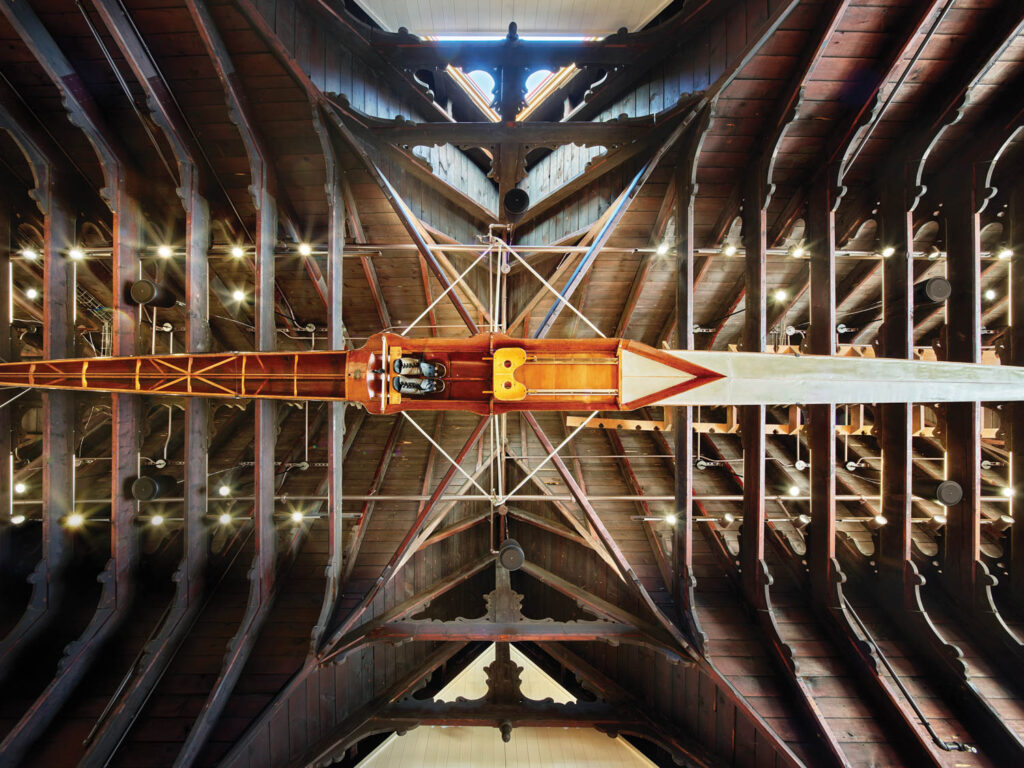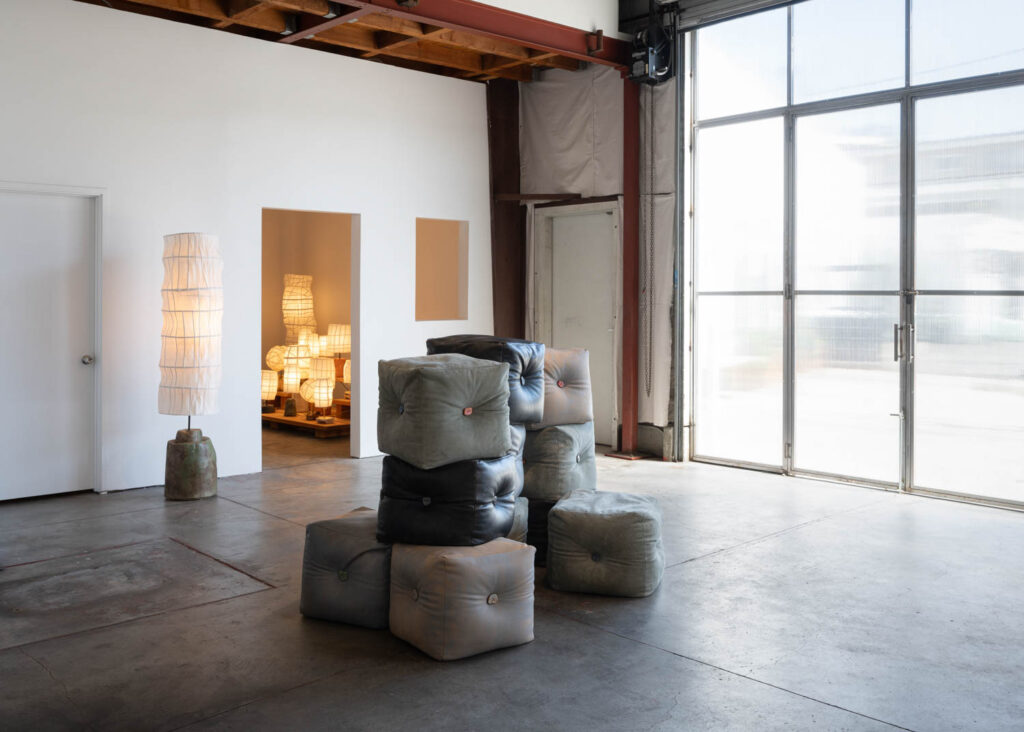
10 Questions With… Bennet Schlesinger
Many influences sweep across the lighting fixtures, furnishings, planters, and beanbags in Bennet Schlesinger’s exhibition, “In Tune With Itself,” at Marta gallery in Los Angeles, which just finished its run April 13. The 37-year-old designer counts his education in one of California’s Waldorf schools (also known as Steiner education schools) as a strong influence, as well as the memories of watching his uncle make surf boards. “The Waldorf education changed my life because Rudolf Steiner’s ethos is embedded in everything about the school,” Schlesinger tells Interior Design. “He wasn’t really stuck, or too influenced by the status-quo.” Three major lessons he still carries with him from those days are, “letting things be askew, allowing the hand to come in, and not fixing everything.”
The diversity of Schlesinger’s material palette, which includes wood, paper, ceramic, bamboo, and brass, owes to his teenage years of watching his uncle smoothen the surf boards. “He helped me notice and understand how things structurally work,” he says. “Just watching someone take the time to make something really proficiently is quite important.” Quality and longevity are the main ideals Schlesinger has learned from his uncle, whom he still watches at work: “He always talks a lot about the heirloom quality, which means something that lasts, something made with care and sentiment that can be passed down to your family.”
The show featured standing light fixtures in various scales, including sconces and floor lamps, made with ceramic and brass bases and bamboo frames dressed in paper. The tables in walnut include ceramic bits embedded into their surfaces to convey an intriguing play with materials and processes. A group of cube-shaped leather beanbags come out of a collaboration with New York-based fashion designer Emily Dawn Long—the cubes are accentuated with a ceramic tile on each surface. Schlesinger works from a large kiln in his garage studio to make his ceramic planters with uneven surfaces, but for small endeavors, such as tiles, he goes to a community kiln. “I think most ceramicists like to work in community kilns—one of the best parts of ceramics is having to rely on other people,” he says.

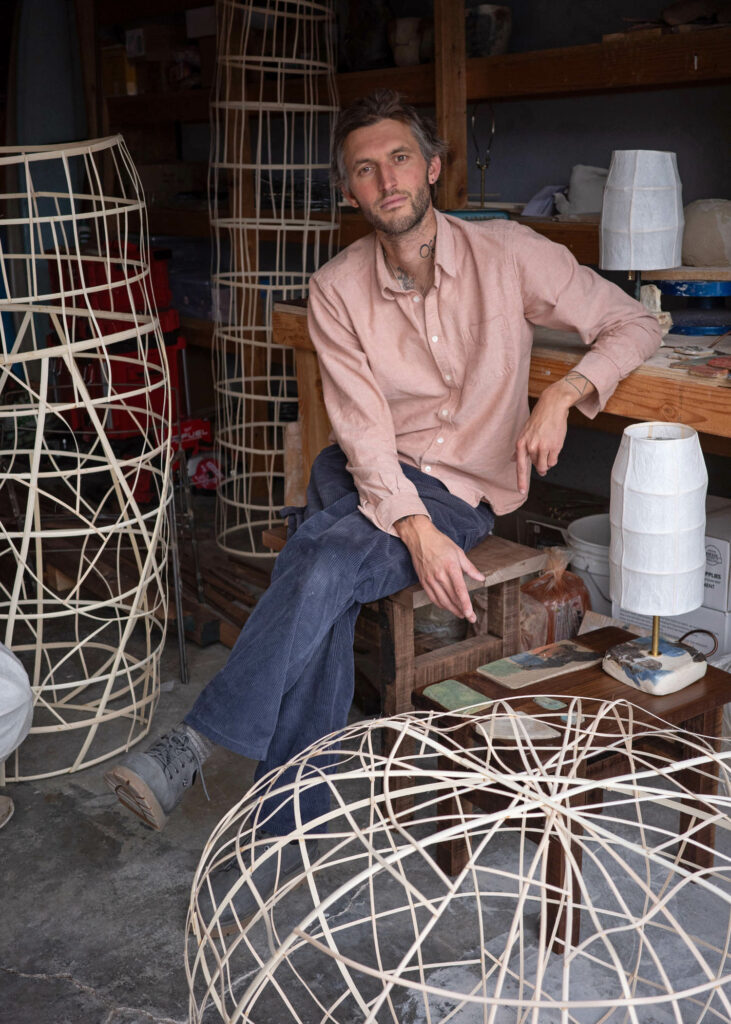
Bennett Schlesinger Discusses Ceramics and Being In Tune With Nature
Interior Design: “In Tune With Itself” has an introspective title, which is about looking back and self-acceptance. Could it also refer to the balance you have found between ceramic, bamboo, wood, brass, and paper?
Bennet Schlesinger: I was on a backpacking trip in the Grand Canyon while I was planning the show, which was right before I was going to start making all the work for a 12-hour-a-day schedule. In my head, I had this image of an orchestra tuning up with all the disparate elements. It was a potent and beautiful image; I was using it as a way to allow myself to make mistakes and explore. It was about letting things be what they are and not having to follow a through line.
ID: How about your dive into mosaics in this show? Could “tuning in” be also about this journey?
BS: I originally started making mosaic pieces but as I got further into the process, I realized that it is a lifelong art form. There are masters of mosaic and I was not going to be one very quickly. At the same time, I still wanted make ceramics, but making 100 ceramic tiles is very different from the way I actually work, and I wanted to honor the way I work with ceramics. So, I started thinking about applying that task to designing tables and benches. I had more experience in grandiose design, but I wanted to pare it back to what was necessary. I thought about the drawings a child would make of a table—with simple legs that are square-ish. Then, I sculpted a feel into it.
ID: Your work has an interesting range of materials such as bamboo, tiles, or paper that are not necessarily related to each other.
BS: I think it comes from designing lighting, which is a balance between two material feelings—earth and air—there is the airy, unweighted quality, and then a dense, earthy, and heavy material. I do try and maintain a natural respect for what the materials actually do by themselves. I don’t try to transmute them into things that they aren’t—this is an ethos that is applied to everything that I’ve made to honor the thing itself.

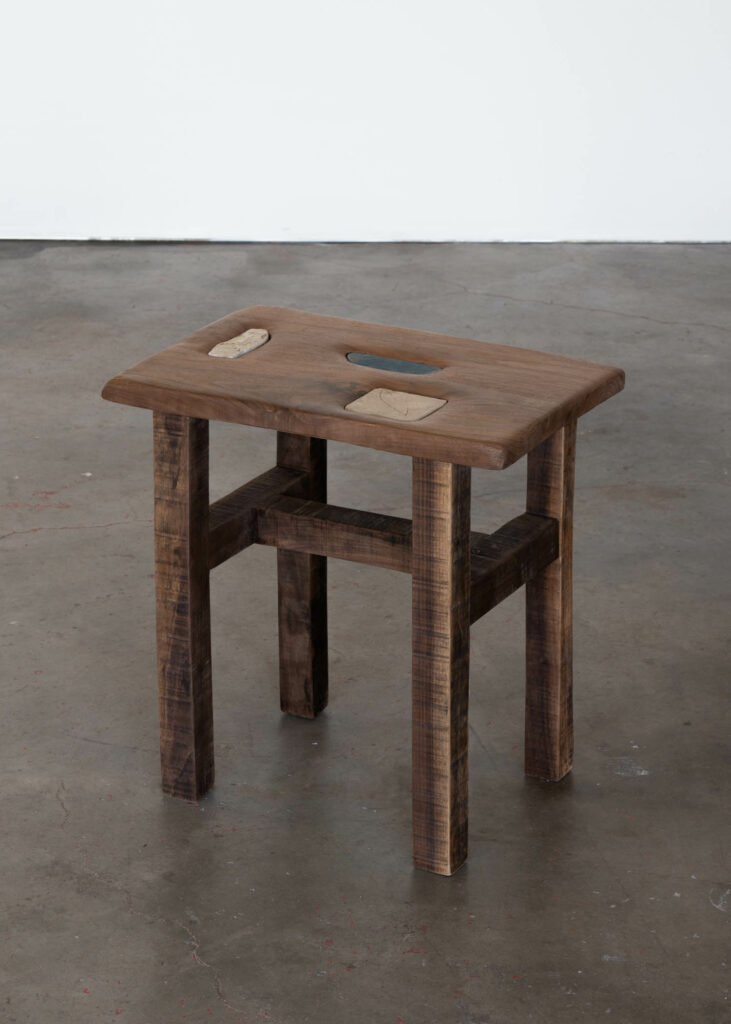

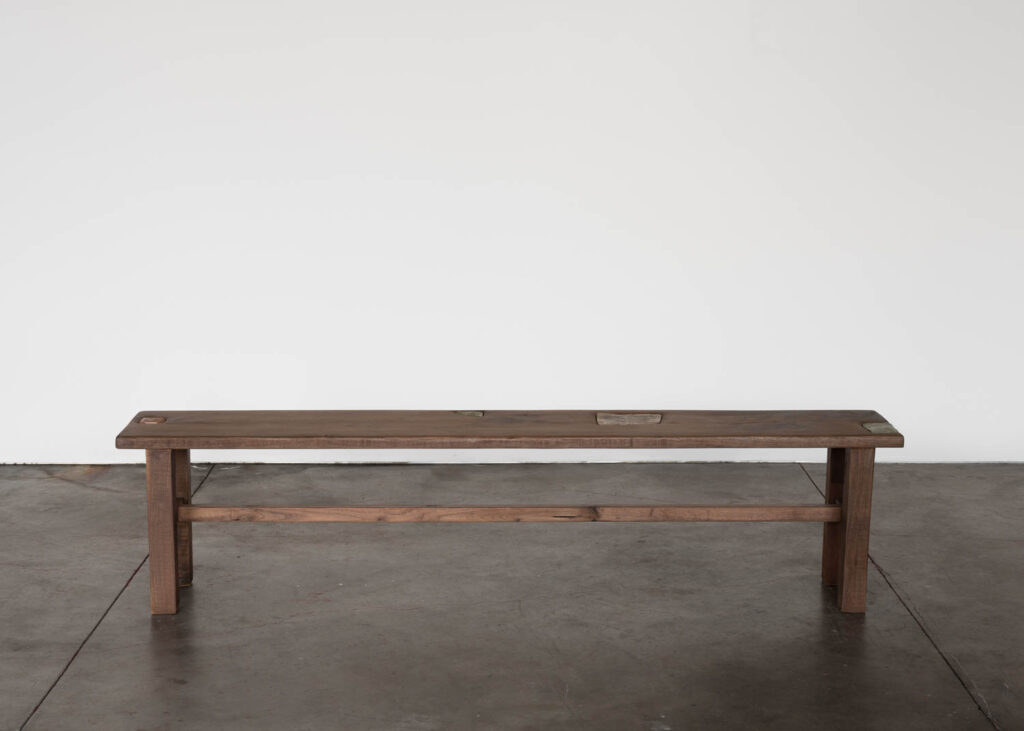
ID: Working with bits of tiles resembles painting with a brushstroke in terms of building something larger through small touches. Do you see this parallel as well?
BS: I haven’t thought about that but, yes, there are specific gestures on a canvas. I just make a lot of tiles, as [it’s] necessary. There is a gestural quality with the way I make tiles. I make a lot of big tiles and then cut or break them into smaller pieces, and then I glaze them. There are a lot of different stacks of glazes, so they are a fraction or a fragment of a gesture in line with a bunch of other tiles—a fragmented storyline.
ID: What do you think about the patience that the process requires?
BS: One of the issues I’ve run into is that whether it is ceramic, lights, or wood, my developed working style takes so much time, and there are so many different elements that are in contrast with each other. All of them have individual steps I have to go through in order for them to come together. So, patience has become one of my biggest challenges. I have to accept the timeline that it takes. I couldn’t make something in a week if I wanted to, maybe 12 days would be the fastest.
ID: How about the technical aspects? You have techniques embedded to your memory through your uncle and years of working in different materials, but you also include contemporary methods.
BS: With woodworking, I use machinery, such as routers and electric saws, but I do the finishing by hand. There is no metal in woodworking; it’s all finished in the classical tradition. Luckily, I am not stuck with maintaining historical methods, so I don’t try to have everything within tradition. Many woodworkers have asked me about this, but I am not so concerned about that. Mainly, I am worried about getting stuck and not being able to make things if I have to do everything in the right way. I am interested in doing things incorrectly and then trying to work my way back from the mistakes.

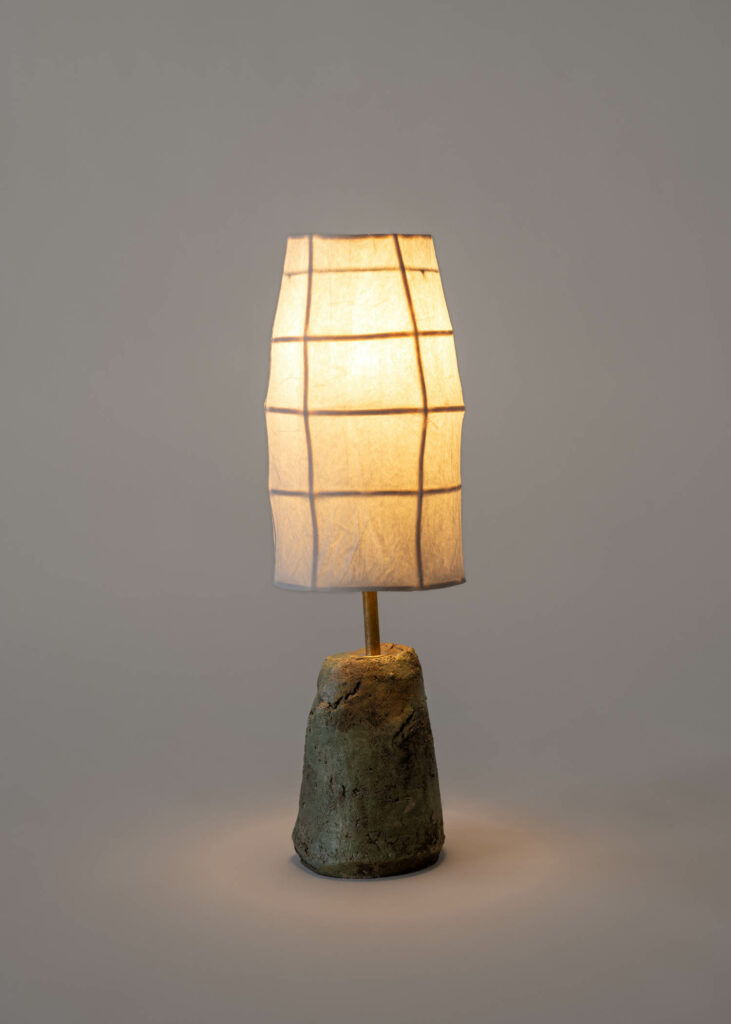

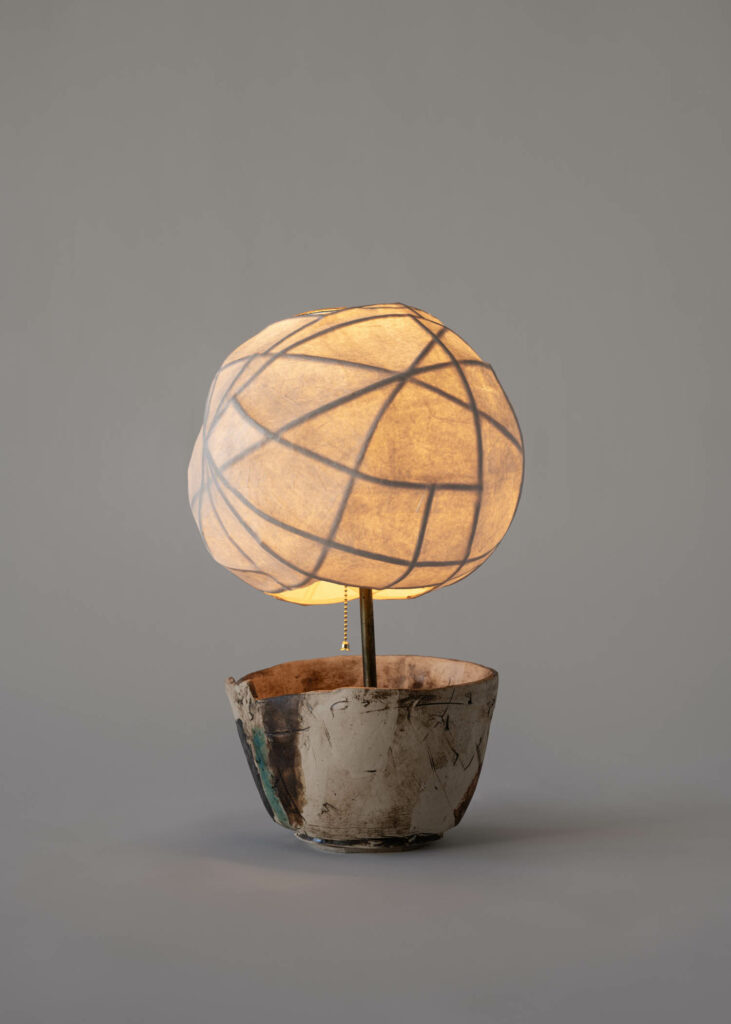
ID: How do you let chance be a part of the process and the final work?
BS: Chance is definitely important in the process, but it is becoming harder to use. The more work I create, the harder it gets to trick myself. For example, sometimes an aesthetic looks wrong to me, so I’ll try to fix it later down the line. This is, of course, not chance as it is rather forced, but it is an interesting game for me. To me, that might be the only way things look nuanced and different from each other.
ID: Tiles carry a chronology-defying effect. It is challenging to gauge the time period of a piece of work made with tiles—do you also think that way?
BS: I’m just afraid of making things that don’t look like they belong. One of my favorite designers, Zaha Hadid, has a visual world that is so futuristic. I try to reach towards that realm, but I realize that I’m starting from a position that is very different. I’m far enough away from that realm that it has become a good challenge to have that Hadid effect in natural materials.
ID: The bean bags you designed with Emily Dawn Long are not the typical pear-shaped bean bags. How did the cube shape forms, with your tiles sewn into them, come about?
BS: Emily presented that idea after a trip to Indonesia where she came across a stack of cubes. We already had other projects we’ve been working on over a long period of time, like developing clothing with ceramic buttons, so this time, we wanted to do something that was alive with a tactile quality. She has a really good knowledge of textiles and is aware of how the body works with fabrics, so for this project, she did all the leather dyes and I made the buttons.

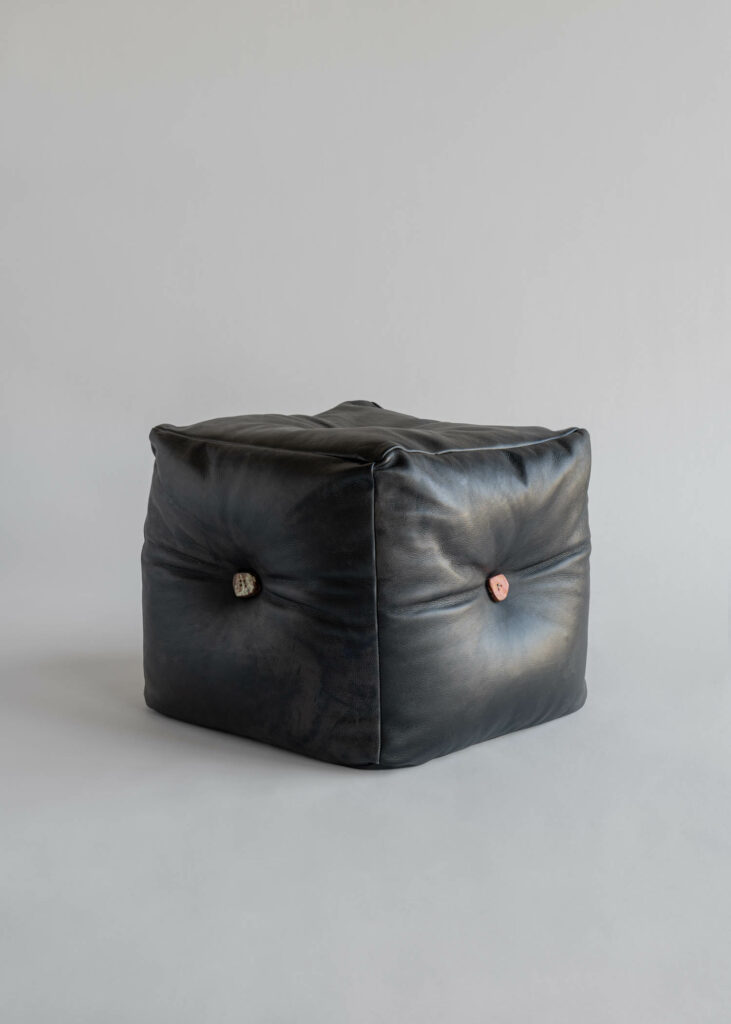
ID: How does being born and raised in California inspire your work, from surfing to immersion into nature?
BS: I grew up surfing and that is still something I do in my free time. When you’re surfing, if you’re out of sync with the ocean, everything seems to be wrong. You can’t figure out why, but you’re just out of rhythm. Then you can quiet yourself down and come into sync with the ocean and align with nature. This is one of the biggest lessons I’ve learned from surfing: The tone of nature can solve many problems.


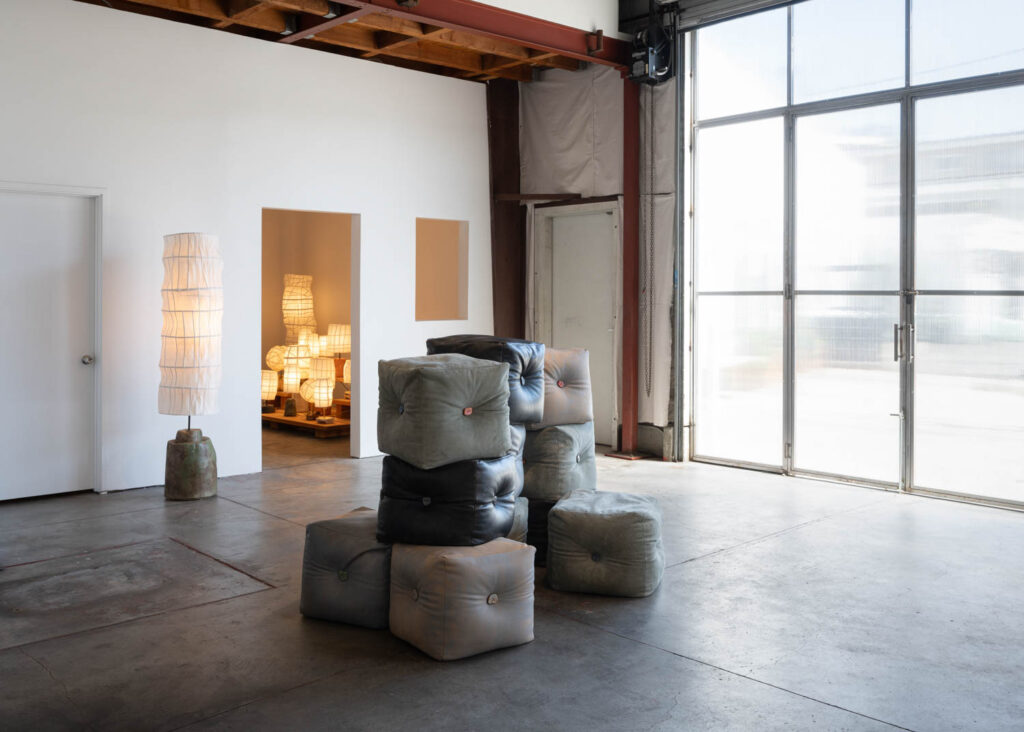
read more
DesignWire
Inside David Lynch’s Dark and Moody Exhibit at Salone del Mobile
Explore David Lynch’s buzzy exhibition at Salone del Mobile.Milano, which features elements that nod to his films, in this account by architect Alexander Gorlin.
DesignWire
Row Over to UPenn’s Updated Historic Boathouse
University of Pennsylvania tapped EwingCole to modernize and expand its existing varsity crew facility, located in an 1875 stone boathouse in Philadelphia.
DesignWire
How Clay Makes a Big Impact in This Vancouver Office
M Moser Associates plus TAV Ceramics equals abacus-inspired installations for the Vancouver, Canada, office of accounting-software company Tipalti.

